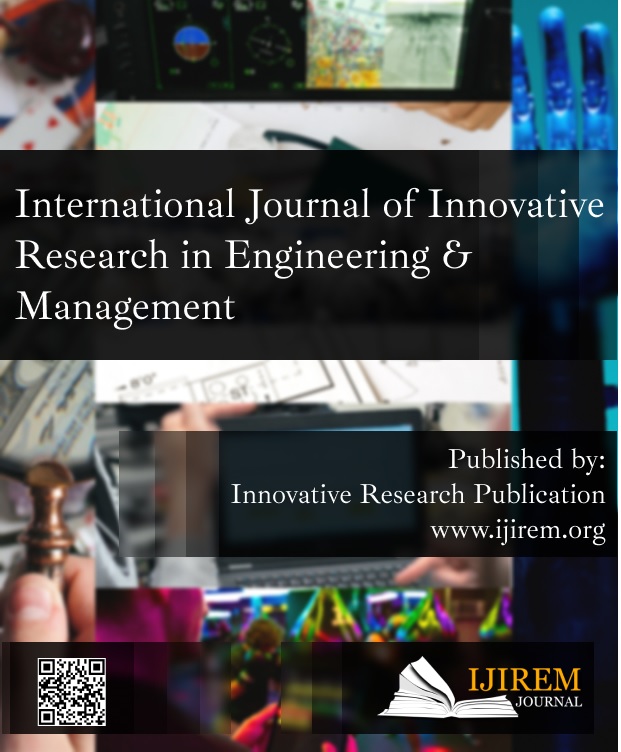Environmental Regulations, Staff Quality, Green Technology, R&D Efficiency, and Profit in Manufacturing
Keywords:
ER, Environment, Green Technology, PollutionAbstract
This research looks at environmental regulations (ER), staff quality (SQ), R&D efficiency (RDE), green technology (GT), and profit. In China, 1197 enterprises in 16 manufacturing sectors were investigated between 2008 and 2015. In 2006, China surpassed the American America as it world's largest emitters of carbon, SO2, and ox nitride. Garbage emissions are especially bad in cities featuring industrialized production lines. Although China's Climate And Energy Regulation sought to lower the percentage of GDP to greenhouse gases from 45 percent in 1996 to 40 percent from 2010 by implementing pollution control regulations, it failed to achieve this goal Firm RDEs are investigated using Department of transportation benchmarks, and indeed the results show that SQ is considered necessary for large RDE and GT (as expected), but its primary effects are mixed. ER also has an effect on the SQ-GT, Total area, and Total area linkages, according to the author. If ERs are reduced, SQ, in especially, will be of no use to GT or profit. If a firm's SQ is at or over the ER cut-off frequency, it may increase SQ for greater gains in GT and profits. Our results' ramifications for theory and practice are also addressed.
Downloads
References
A. Sbardella, F. Perruchas, L. Napolitano, N. Barbieri, and D. Consoli, “Green technology fitness,” Entropy, 2018.
A. Valero, A. Valero, G. Calvo, and A. Ortego, “Material bottlenecks in the future development of green technologies,” Renewable and Sustainable Energy Reviews. 2018.
M. Song, S. Wang, and J. Sun, “Environmental regulations, staff quality, green technology, R&D efficiency, and profit in manufacturing,” Technol. Forecast. Soc. Change, 2018.
G. Das Soni, “ADVANTAGES OF GREEN TECHNOLOGY,” Int. J. Res. - GRANTHAALAYAH, 2015.
N. Izieadiana, R. Zakaria, S. M. Shamsuddin, and F. Ahmad, “Decision making of green technology retrofitting in higher learning institution,” Int. J. Adv. Sci. Technol., 2020.
M. S. Usmani, J. Wang, N. Ahmad, M. Iqbal, and R. I. Ahmed, “Mapping green technologies literature published between 1995 and 2019: a scientometric review from the perspective of the manufacturing
industry,” Environmental Science and Pollution Research. 2021.
A. K. Chakka, M. S. Sriraksha, and C. N. Ravishankar, “Sustainability of emerging green non-thermal technologies in the food industry with food safety perspective: A review,” LWT, 2021.
C. Zhang and Y. Xu, “Environmental regulation of PM2.5 in urban green vegetation and the influence of green technology progress based on remote sensing image,” Arab. J. Geosci., 2021.
E. Afum, Z. Sun, Y. Agyabeng-Mensah, and C. Baah, “Lean production systems, social sustainability performance and green competitiveness: the mediating roles of green technology adoption and green product innovation,” J. Eng. Des. Technol., 2021.
E. Verdolini, C. Bak, J. Ruet, and A. Venkatachalam, “Innovative green-technology SMEs as an opportunity to promote financial de-risking,” Economics, 2018.
M. Song and S. Wang, “Market competition, green technology progress and comparative advantages in China,” Manag. Decis., 2018.
B. Cao and S. Wang, “Opening up, international trade, and green technology progress,” J. Clean. Prod., 2017. [13]B. Du, Q. Liu, and G. Li, “Coordinating leader follower supply chain with sustainable green technology innovation on their fairness concerns,” Int. J. Environ. Res. Public Health, 2017.
M. A. Ramdhani, H. Aulawi, A. Ikhwana, and Y. Mauluddin, “Model of green technology adaptation in small and medium-sized tannery industry,” J. Eng. Appl. Sci., 2017.
S. Aithal, S. Aithal, and P. S. Aithal, “Opportunities & Challenges for Green Technology in 21st Century Opportunities & Challenges for Green Technologies in 21 st Century,” MPRA Pap. No., 2016.
H. G. Kim and S. S. Kim, “Occupants’ awareness of and satisfaction with green building technologies in a certified office building,” Sustain., 2020.
T. M. P. Nguyen and K. Davidson, “Contesting green technology in the city: techno-apartheid or equitable modernisation?,” Int. Plan. Stud., 2017.
Y. G. Abdildin, S. A. Nurkenov, and A. Kerimray, “Analysis of green technology development in Kazakhstan,” Int. J. Energy Econ. Policy, 2021.
W. Sun et al., “The State of the Art: Application of Green Technology in Sustainable Pavement,” Adv. Mater. Sci. Eng., 2018.
S. Zailani, M. Iranmanesh, D. Nikbin, and H. B. Jumadi, “Determinants and environmental outcome of green technology innovation adoption in the transportation industry in Malaysia,” Asian J. Technol. Innov., 2014.
B. Mrkajic, S. Murtinu, and V. G. Scalera, “Is green the new gold? Venture capital and green entrepreneurship,” Small Bus. Econ., 2019.
R. R. Tan, K. B. Aviso, and D. K. S. Ng, “Optimization models for financing innovations in green energy technologies,” Renew. Sustain. Energy Rev., 2019.
J. Hao, H. Shi, V. Shi, and C. Yang, “Adoption of
automatic warehousing systems in logistics firms: A technology-organization-environment framework,” Sustain., 2020.
S. Yin, N. Zhang, B. Li, and H. Dong, “Enhancing the effectiveness of multi-agent cooperation for green manufacturing: Dynamic co-evolution mechanism of a green technology innovation system based on the innovation value chain,” Environ. Impact Assess. Rev., 2021.
F. Jamaluddin, A. Ibrahim, and A. Y. Bahaudin, “Factor that contributes to the success of green
technology implementation in Malaysian Public Universities,” Int. J. Supply Chain Manag., 2018.
